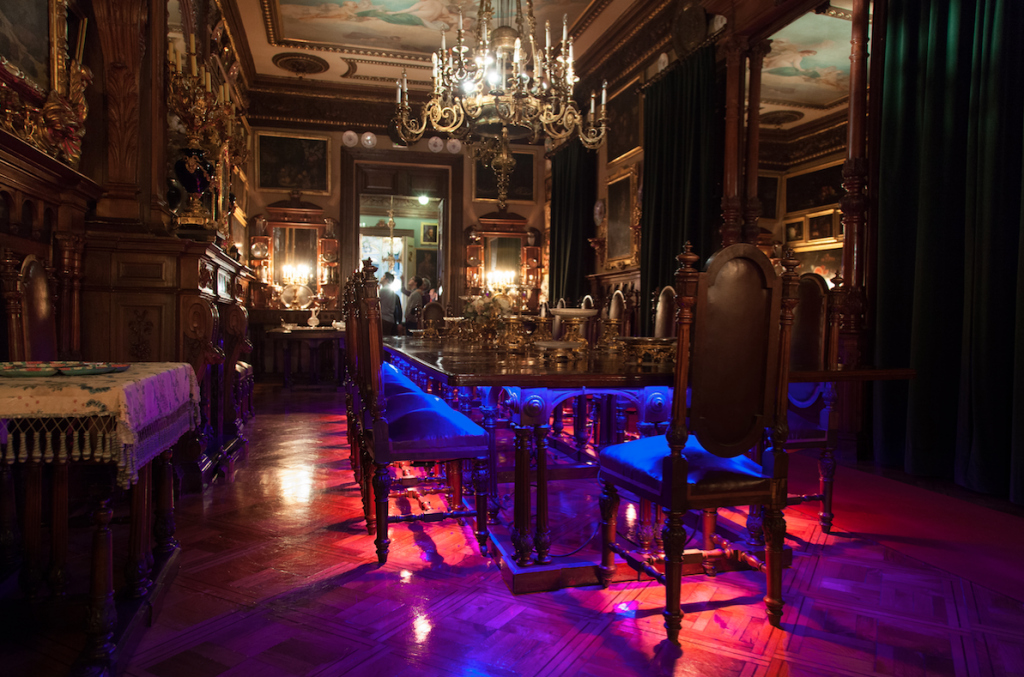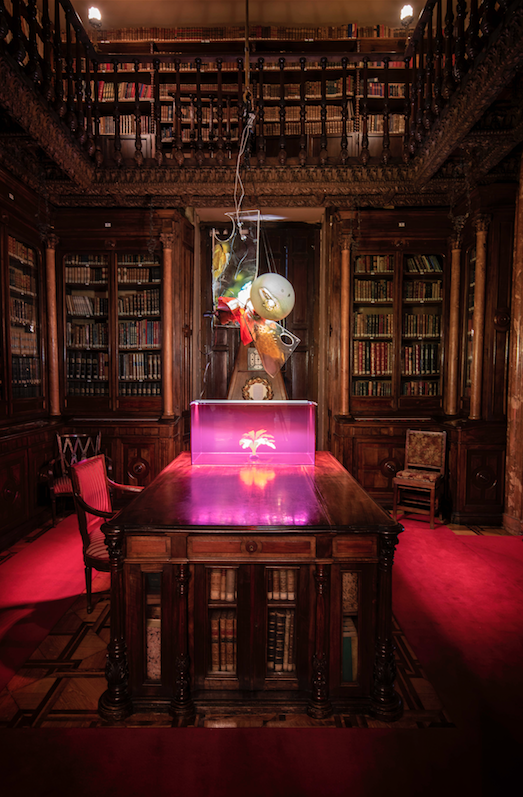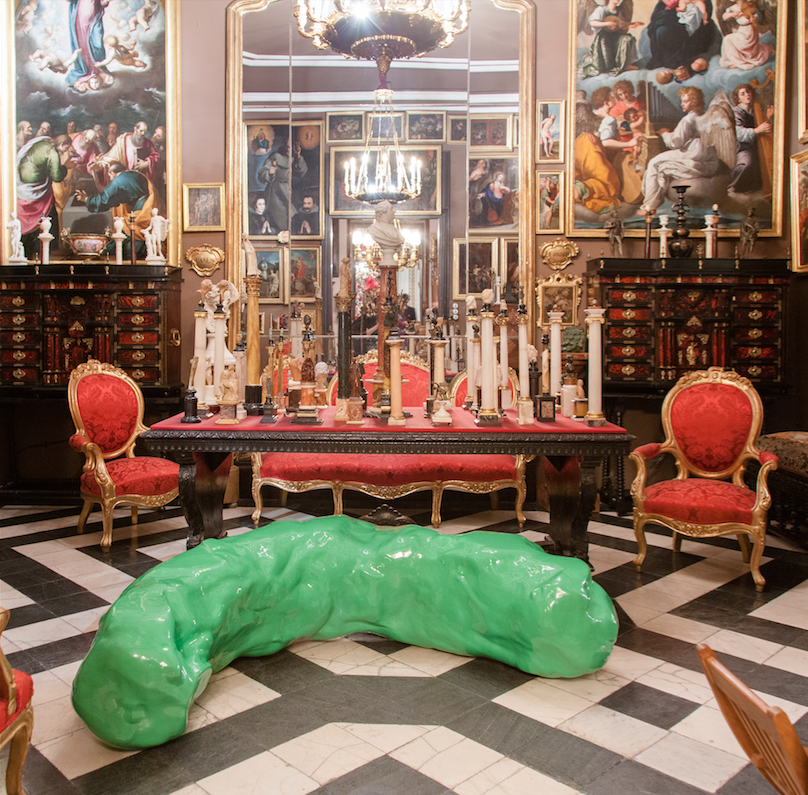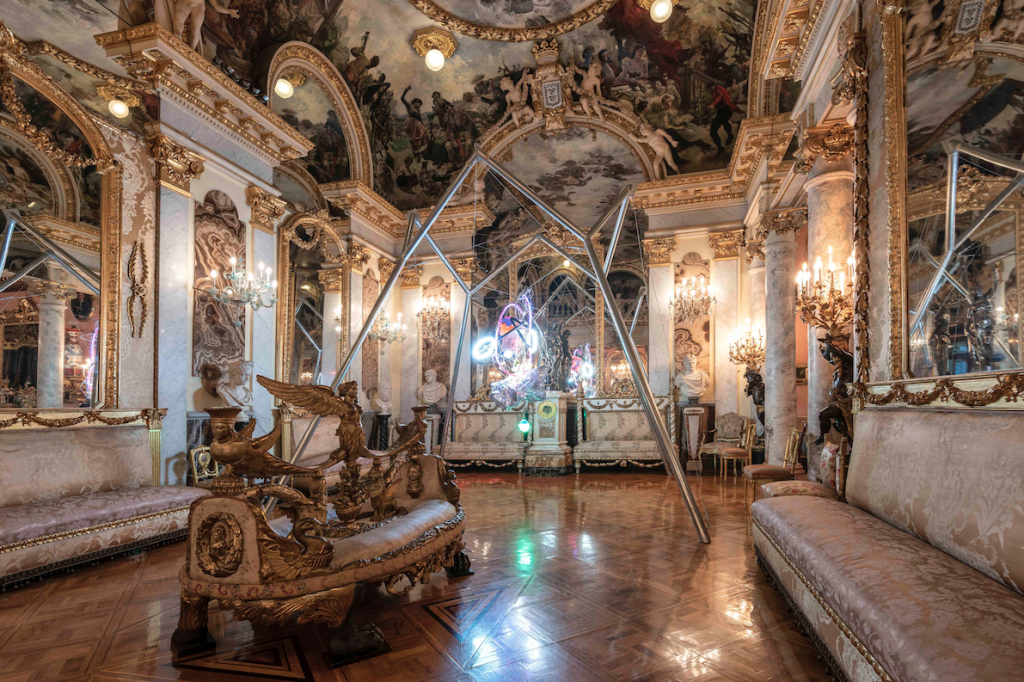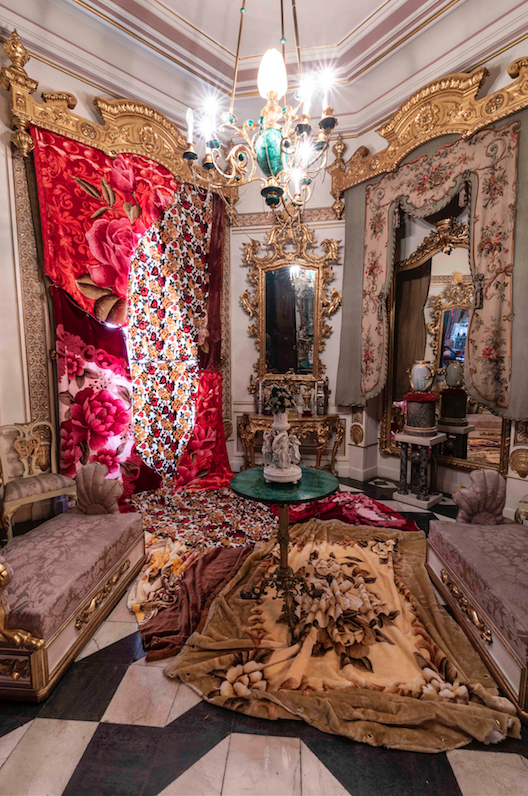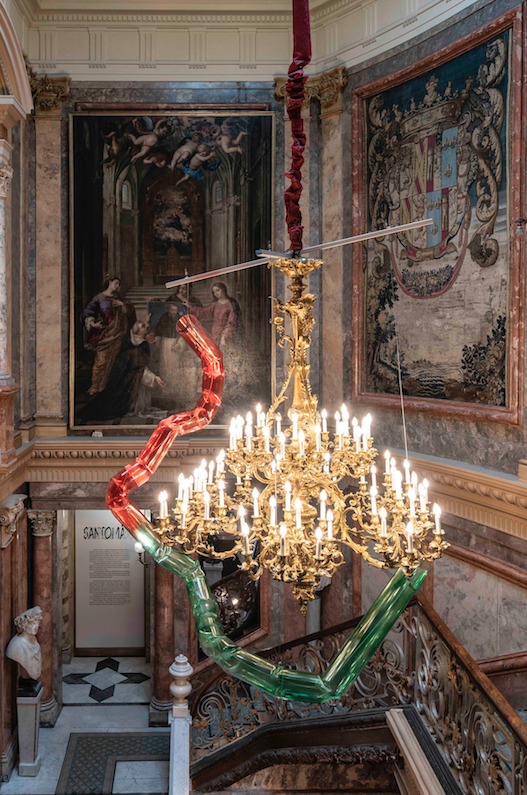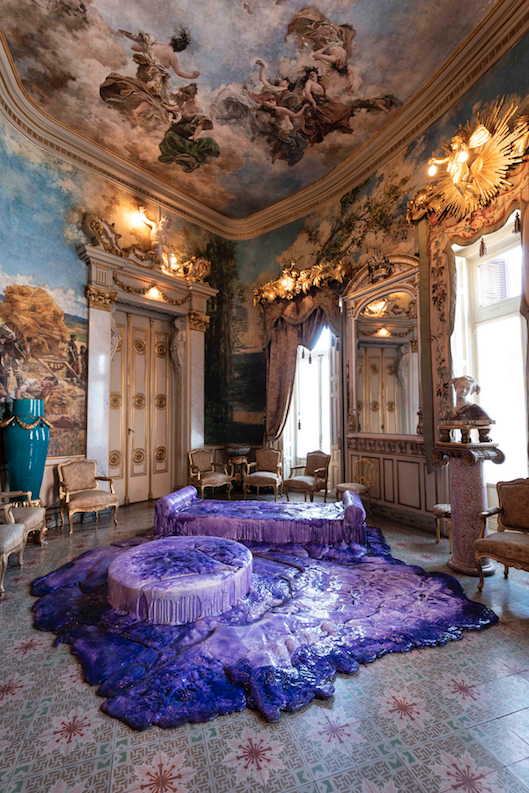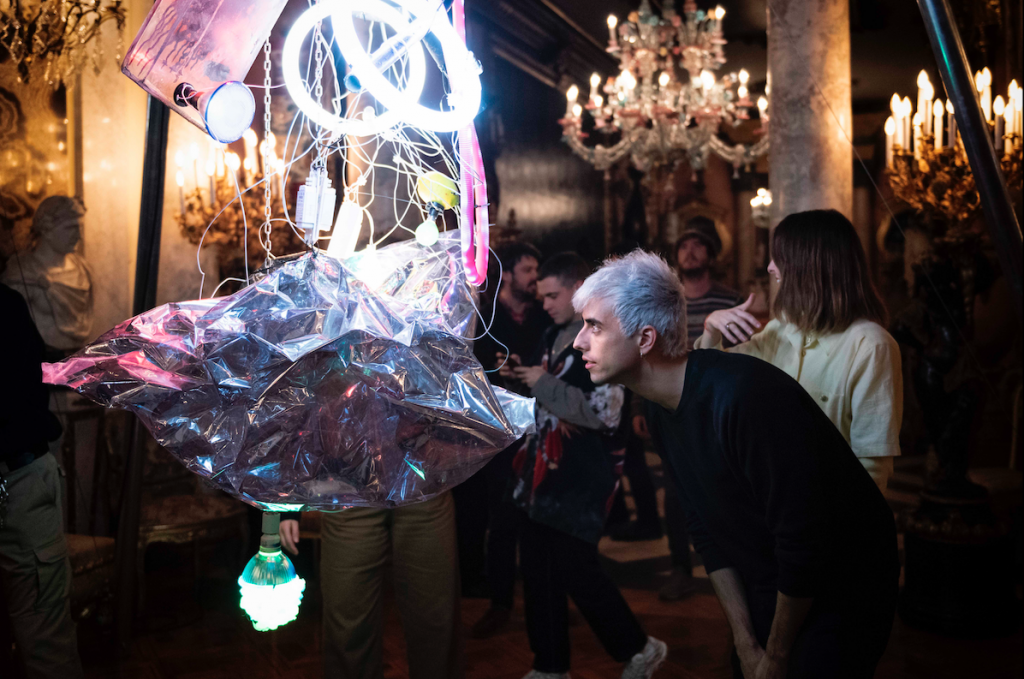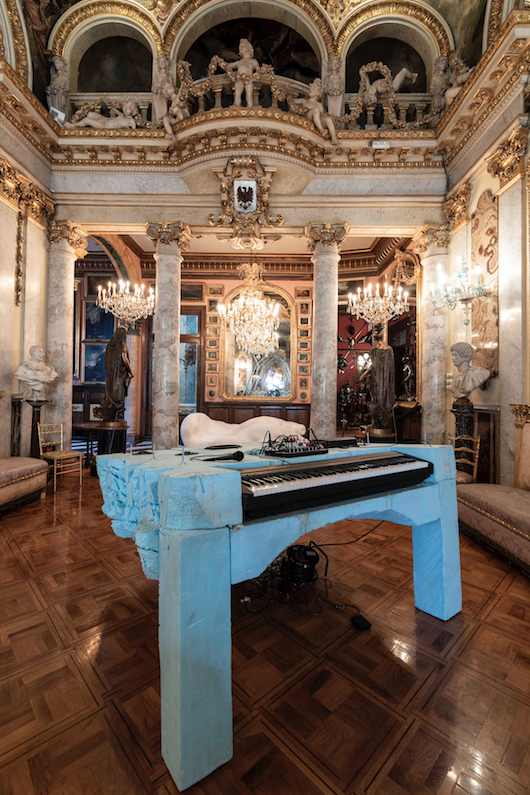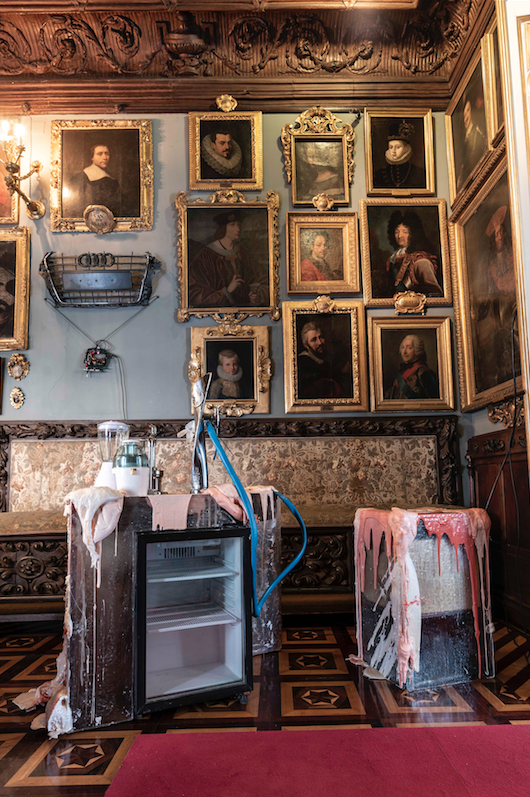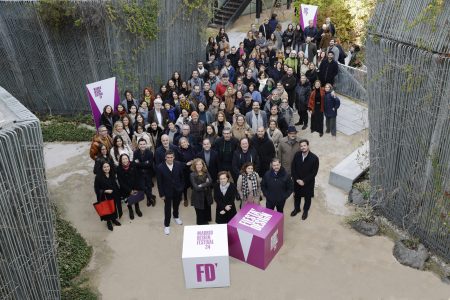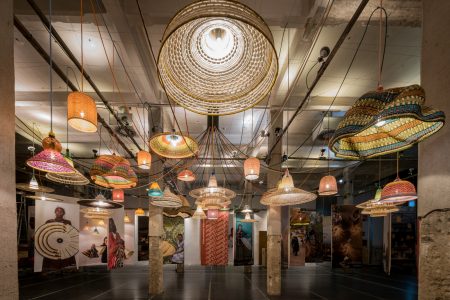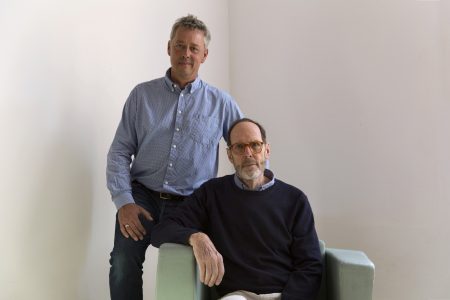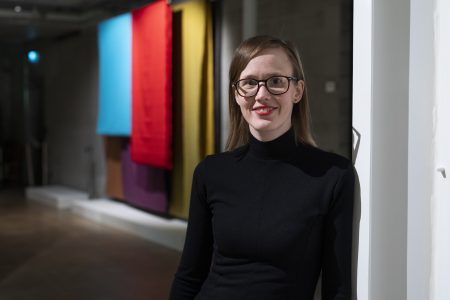Radical Interventions: Guillermo Santomà at the Museo Cerralbo
Spanish designer and architect Guillermo Santomà disrupts the Museo Cerralbo, creating an intriguing dialogue between 19th and 21st century design
The Museo Cerralbo is a treasure trove of curiosities. A diversity of objects from the 16th century to the 19th century are packed onto every surface, the ceilings are hand-painted with blue skies, cherubs and angels and the walls host frame after frame of paintings that cover almost every inch of the space. The museum is a time capsule of aristocratic taste from the late 19th and early 20th centuries in Madrid with its permanent collection and building donated by the founder and collector don Enrique de Aguilera y Gamboa (1845-1922) who was the 17th Marquis of Cerralbo as well as a politician, academic writer, collector and archaeologist. The space has been preserved as it existed, as a house-museum, for nearly 100 years. The ornate house demands a sense of reverence where it seems like nothing should be touched or moved lest the story of the house be disrupted.
Enter Guillermo Santomà.
For the occasion of the second edition of the Madrid Design Festival, Museo Cerralbo invited the Spanish architect and designer, Guillermo Santomà, into the museum, to shake up the collection. He has made site-specific works that speak both to and about the house-museum and its contents. Developed over the past two years, Santomà has made pieces that act as spatial interventions, juxtaposing the opulent baroque collection with his radical contemporary designs.
In 18 sites around the 32 roomed museum, permanent pieces have been removed and replaced with something else. Santomà works are sometimes camouflaged, almost unnoticeable when you first enter a room but for a subtle sense of dissonance that makes you look again. One such chameleon-esque piece is ‘Tapestry’ (2019) which hangs as a curtain, fountaining onto the floor of the Empire Sitting Room. Its warm colors and floral patterns blend it into the interior but it’s somewhat crude construction method that uses zip ties to join the pieces of fabric together hint at its otherness.
Other pieces, like the oozing bright purple ‘Miami Couch’ (2018) almost shouts about its new presence in the space to visitors. The distinctive visual language, rendered in resin and foam creates an extreme contrast against the gold tinted backdrop and ornate murals of the Chamfered Corner Room. Cecilia Casas Desantes, one of the museums four curators, tells TLmag that this piece is the “star of the exhibition” for visitors.
Another distinctive site in the exhibition is the library. The 7000 volumes that line the floor-to-ceiling shelves of the dimly lit room are joined by Santomà’s ‘Lamp’ (2018) and ‘Aquarium’ (2019). The former a lighting piece made from large shards of semi-transparent plastic and other unidentifiable materials that, together, make a sort of three-dimensional collage. The latter seems to be something from a dystopian future, with the glass case of the aquarium emitting a red LED glow and encasing a single plant.
Santomà pieces are spread across the museum, surprising visitors in hallways, rooms and in unexpected corners. Despite their geographical distance from each other Guillermo Santomà says the pieces do not sit individually but make one whole work. He says: “It’s an idea of a performance that goes beyond its usual understanding, resulting in something scenographic, more like a story”.
The titles that Santomà has given his works add dry humor to the exhibition—there is a mini bar called ‘Bar’, a table entitled ‘Table’ and a plastic green cylindrical sculpture named ‘Greenshit’ for its upscaled yet uncanny resemblance to bodily waste. As well as adding a touch of amusement, the titles also reference the act of collecting and cataloging objects, commenting on the museum’s own practice and the marquis personal acts of collecting.
The interventional exhibition functions both as a reflection on the permanent collection as well as allowing visitors to examine the changing physicality of today’s world in new light. The more contemporary materials of plastic, foam and aluminum that make Santomà’s work look alien amongst the intricate wooden interiors and carefully crafted glass, ceramic and metal objects. Decontextualizing these materials from their 21st-century habitats and placing them in a time capsule of the past emphasizes how manufacturing and technological advancements have changed the very texture of the world around us and, with it, our attitudes and relationships with objects.
The Guillermo Santomà exhibition will be on display at Museo Cerralbo until March 24
This is part of our coverage of the 2019 Madrid Design Festival. To read the rest of the series, click here.
